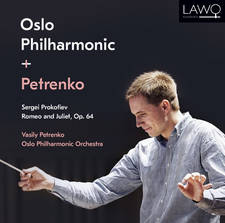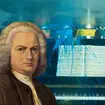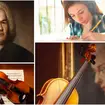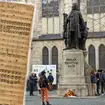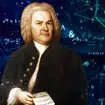Bach’s Concertos: a guide
17 August 2012, 14:51 | Updated: 30 September 2014, 14:33
It’s not all about the Brandenburg Concertos – but it’s a good place to start! Discover the magic behind Bach’s fantastic Baroque orchestral music.
Of Bach’s mammoth output of more than 1100 compositions, only 28 were classed as concertos. But with big hitters like the Brandenburg Concertos or the ‘Bach double’, for two solo violins and orchestra, it’s definitely worth getting to know them better.
Brandenburg Concertos: a musical job application
This group of six concertos is Bach’s best-known orchestral work. Originally titled ‘Concerto for many instruments’, they’re now known as the Brandenburg Concertos after Bach submitted them to Margrave Christian Ludwig of Brandenburg-Schwedt in 1721 in the hope of getting a job. For some reason, his application was unsuccessful – it could be because Bach strayed from the ‘conventional’ Baroque idea of a concerto grosso, where the music is passed between a small group of soloists and the full orchestra. They might not sound exotic now, but listen out for the three groups of strings in No. 3 or the violin and recorder combination in No. 4. It would have been pretty exciting for a Baroque audience. Listen to the first for a dose of Baroque grandeur, or the sixth for an example of Bach’s later musical style.
Concerto for Two Violins in D minor: the Bach ‘double’
You might recognise the spiky tune from the first movement, or the syrupy middle movement’s beautiful violin duet, but the chemistry between the two violins makes this music stand out. Written between 1730 and 1731, Bach broke boundaries once more, creating one of his recognisable works. It proved to be such a hit that he transcribed it for harpsichord a few years later, this time in C minor.
Keyboard concertos: Baroque ‘cover versions’
Harpsichord, strings, and continuo. Harpsichord and recorders. Combinations of multiple harpsichords. Bach’s harpsichord concertos come in many guises, but it’s thought that not many of them were written for harpsichord at all. Some were pieced together from lost violin or oboe concertos. The sprightly concerto in C major (BWV 1061) may be the only one originally written for the instrument. Its conversational style shows off the best of the harpsichord in musical dialogue with the orchestra.
Other instrumental concertos
Some concertos we know as instrumental concertos now were originally written for harpsichord. The ‘Triple’ concerto, for violin, flute and harpsichord is actually an adaptation of a harpsichord prelude. In the Baroque period, music was often written without a specific instrument in mind, so pieces for violin, flutes and oboe could be interchangeable. Bach’s two original violin concertos in A minor and E major are favourites in the repertoire – the bright first movement of the concerto in E is a particular highlight.
